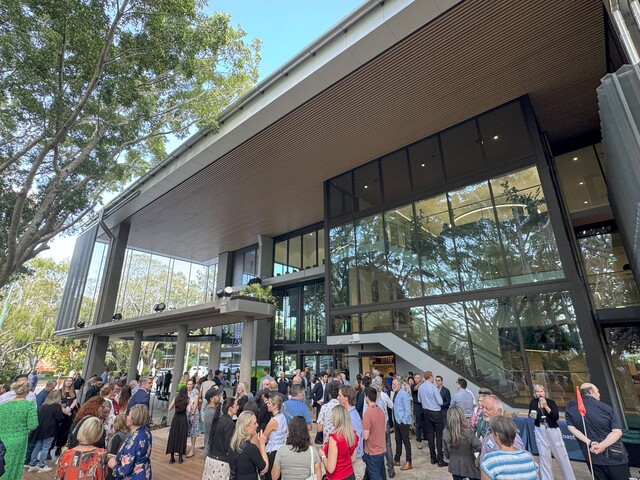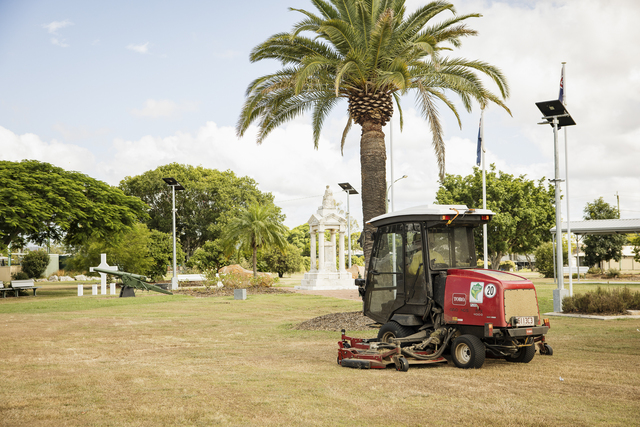National Accounts statistics show that Australia is enjoying one of the longest periods of growth in its history. But the $A is in free fall and we have a chronic current account deficit. How do you reconcile the two? Although some will deny it, the inescapable fact is that the Australian economy has significant structural weaknesses associated with our lack of value adding.
When the inevitable economic downturn happens it will expose the problem. This is not a cheap shot at the Howard Government &endash; indeed it has achieved much in micro economic reform and in forcing industry to face up to its own problems. However, being successful on world markets needs more than a competitive pricing regime. If that is all it requires, our weak $A should have corrected the problem.
The answer lies in building supply chains to the major world markets. And it does not involve picking winners. Let me explain.
The Biella industrial district is about one hour’s drive north west of Milan. Its population is 190,000, and is a world centre for the manufacture of wool textiles. Home to 1,500 spinning mills, clothing companies, machinery manufacturers, employment in the industry within this district alone is 28,000. Unemployment is around five percent compared with the national average of 12 percent, while income per head is 30 percent higher than the national average.
Annual output of textile product from the Biella district is around $8 billion. Why? Biella has a clear competitive advantage. It is based on world class, integrated supply chains. In layman’s terms, companies depend on each other and work to common goals &endash; they are able to achieve economies of scale and influence well beyond their individual operations.
They sell their product into major markets and derive value through their product and market positioning. Over the years, Biella has attracted the Who’s Who of the world wool textiles industry&endash; names such as Zegna and Fila and the fashion houses of Milan and Paris feature prominently. A strong regional brand has developed, which has built further value into the supply chain.
The supply chain includes Citta Degli Studi. This is a precinct that co locates training (Textilia SPA), education (Polytechnic of Turin degree in chemical engineering with a textile and environmental emphasis), applied research (arm of the National Centre of Research), technology transfer (State Technical Industrial Institute), marketing (the Italian seat of the International Wool Secretariat), standards (public institute for the official certification of wool), and environment (Association for the Environmental Protection of the Biella District).
Australia is playing its role because we supply 40 percent of its wool requirements, and the CSIRO has provided technical assistance. The dynamism of industrial hot spots such as Biella has been a blessing for the Italian economy. To its credit, the Italian Government recognised two decades ago that the nurturing of supply chains and precincts in this way is very effective industry policy.
It allows winners to basically pick themselves, and the relatively decentralised nature of decisionmaking in Italy also means that industrial districts sit well within the socio political setting.
Australian perspectives
Some industry analysts believe that Australia should not draw too many lessons from the Italian precincts, because of our spatial – small domestic market problems, a fragmented industry structure, the lack of a value adding culture, and weak supply chains into the world market.
However there are examples beginning to emerge in Australia of industries and localities that are building supply chains along similar lines to Biella.
The example is the wine industry. A recent study, ‘Australia’s Wine Industry: Collaboration & Learning as Causes of Competitive Success’, authored by Ian Marsh and Brendan Shaw, explains that the Australian wine industry has been spectacularly successful since the mid 1980s. Exports now total 32 percent of total production (compared to 17 percent for the major producers, France and Italy). We now hold 3.5 percent of the world wine market by value.
While a decline in the value of the Australian dollar was one stimulus, changes in industry ownership had a major effect on the structure and scale of individual firms.
This improved the industry’s overall business orientation, its general engagement with international markets, and its commitment to innovation. In the process, the wine industry has transformed itself. It has ceased to be composed solely of rivalrous, competitive firms.
Although fierce, competitive rivalry persists, it has been supplemented by industry collaboration around matters of shared concern. The industry has raised its level of integration, and numerous knowledge driven clusters or precincts have emerged.
For example, the Barossa Valley now has the key players and the pathways to world markets similarly enjoyed by Biella.
There are also clusters of world class firms emerging in places like Coonawarra, Pokolbin, Mudgee, Yarra Valley, McLaren Vale, Margaret River and so forth.
Why is all this important? The wine industry experience is of wider significance. Australia’s past economic prosperity has been built around commodities and mineral products that were exported to world markets. Human skills were not insignificant in these activities &endash; but they were secondary to what were seen to be naturally occurring comparative advantages.
The wine industry’s success is based on a reversal of these relationships. Natural advantages still count. But humanly created advantages predominate. These have been amplified through collaborative action. A combination of collaboration and competition has replaced solely competitive relationships. This combination has been decisive in sustained success.
The Barossa is mirroring the achievements of Biella. In terms of Australia’s long term economic performance, we must harness the competitive and collaborative forces available in other industries and locations. Failure to do so will consign us to a second tier economy, with a second-tier currency.
*Rod Brown’s Canberra based consultancy group, Australian Project Developments Pty Ltd, specialises in industry/regional development and government liaison.
For further information telephone (02) 6231 7261 or email apd@orac.net.au







